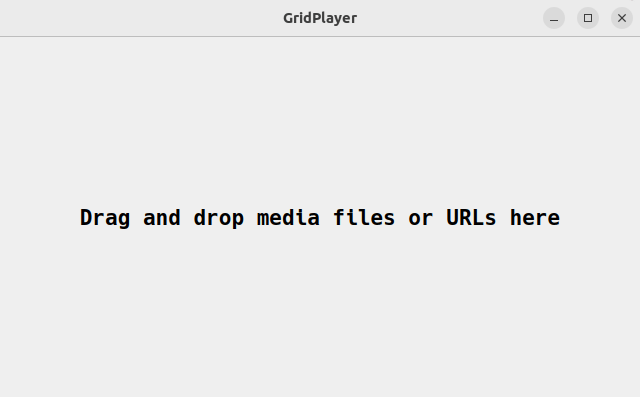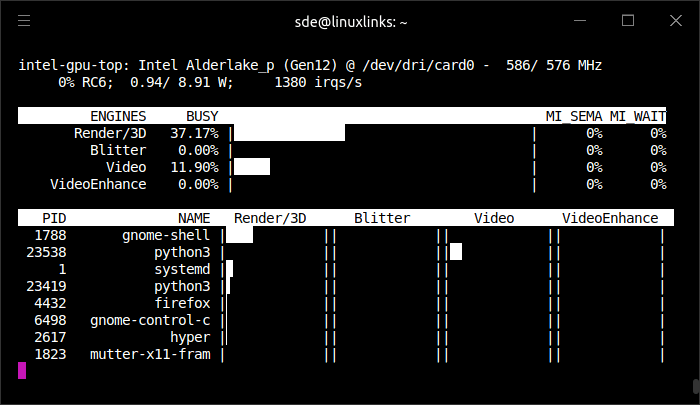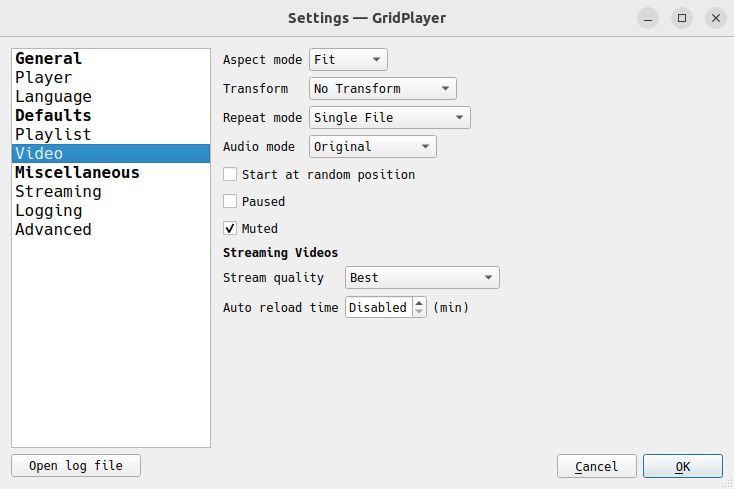In Operation
This is what you’ll see when starting GridPlayer.

If you right click on the window, you can add files and URLs, open a playlist, as well as access lots of settings. The software supports the following URL schemas: http, https, mms, mmsh, rtp, rtsp, and udp courtesy of streamlink and yt-dlp.
Here’s an image of 4 YouTube streams being played simultaneously. As GridPlayer uses VLC, there’s support for a huge range of video and audio formats. By default all videos are muted, but you can unmute one or all of the videos.

As the image below confirms, they are being played back with hardware decoding (see the Video Engine line). Our Intel NUC 13 Pro Mini PC with its Iris Xe onboard graphics plays the four streams without breaking a sweat.

Playing 9 streams simultaneously on the NUC increases Render/3D to 40% and Video to 24%. Playback remains flawless. Remember, this is just with onboard graphics.
The software offers a configurable grid layout. And you can swap videos all with drag-n-drop which is pretty cool.
You can control the video aspect, playback speed, zoom and much more. There are plenty of other customization options.

Summary
GridPlayer is pretty unique. It wraps some awesome open source software into something quite special. It certainly isn’t the finished article though.
We really recommend GridPlayer if you’re the type of person like Grandad from Only Fools and Horses (a hugely popular British tv programme where Grandad liked to watch multiple TVs at the same time).
GridPlayer is cross-platform software. Besides Linux, it runs under macOS and Windows.
Website: github.com/vzhd1701/gridplayer
Support:
Developer: Vlad
License: GNU General Public License v3.0
GridPlayer is written in Python. Learn Python with our recommended free books and free tutorials.
Give GridPlayer a whirl and let us know how you get on in the Comments section below.
Pages in this article:
Page 1 – Introduction and Installation
Page 2 – In Operation and Summary

Groovy